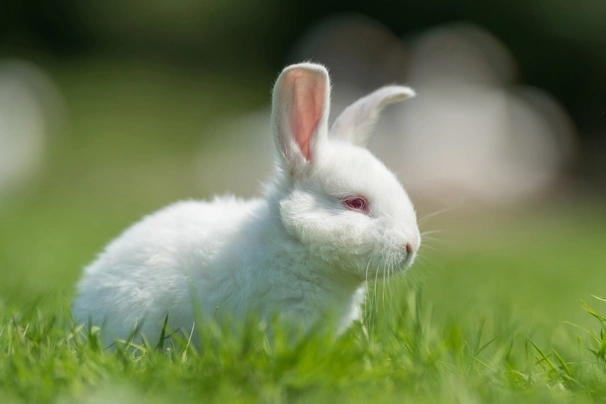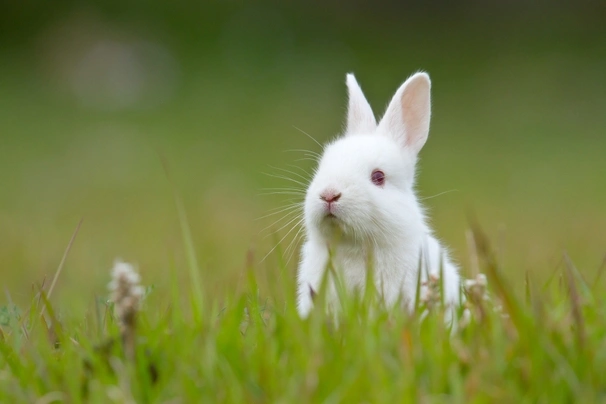Polish
Introduction of the Polish
A small breed of rabbit, the Polish was developed not in Poland as the name might suggest, but in the UK in the 19th Century. They were so named because of the ‘polish’ of their glossy fur.
The breed was originally developed for the dinner table and despite its diminutive size; it was considered a great delicacy.
History of the Polish
The exact origins of the Polish are somewhat shrouded in mystery, although they are thought to have wild, silver and Albino Dutch rabbits in their heritage. They were originally intended for the cooking pot and although they are a small rabbit, they were highly sought after.
The breed was founded in Britain in the middle of the 19th Century and was exported to the US in around 1912. The UK Polish is slender and hare-like, while American breeders attempted to create a more rounded ‘cobby’ animal that closely resembles some of the other dwarf breeds.
Appearance of the Polish
- Main colourways: Any colours is permitted by the show standard
- Average weight: 1.1 – 1.6kg
No longer bred for the table, the Polish is now popular as a pet and an exhibition breed. The Polish is a small breed, which is recognisable thanks to its slim, hare-like appearance and small ears that touch all the way to the tips.
The Polish should display a short skull, with chubby cheeks and bright, confident eyes. Because it’s a small animal the Polish is sometimes confused with dwarf breeds such as the Netherland Dwarf. On close inspection it becomes clear that the Polish is more slender, slightly bigger and has a more angular head. Colours include white with blue eyes, albino (white with red eyes), black, agouti, tan and blue. Originally only the albino variety was accepted as a show animal, however all colours are now recognised by the breed standard.
Temperament of the Polish
The Polish is a rabbit that elicits a mixed reception from breeders. Many love this shiny, lively little rabbit as it is very clever and needs almost constant stimulation. Due to its intelligence it has won a legion of fans who enjoy playing and training their Polish Rabbits.
However, there are fanciers who feel the Polish can display aggressive tendencies, and while all breeds have the potential to be aggressive, many people feel the Polish has a tendency towards violence and therefore does not make a good pet.
Whether the Polish is aggressive or not, it’s important to research any lines thoroughly if you’re considering buying one. It’s also worth speaking to rabbit experts so you can learn exactly how to handle your rabbit properly and how to train it too. If you handle your rabbit from an early age, and buy from lines with few aggressive animals in them, then you are less likely to have problems further down the line.
Health of the Polish
Although a generally hardy little rabbit, there are a number of health issues that can affect rabbits regularly that any responsible owner should look out for.
As a rodent, the teeth of all rabbit breeds grow continually and can cause problems if they’re allowed to get too long. Spurs of extra growth can develop that can be very sharp and injure the inside of the mouth, and overgrown molars can prevent the animal from eating properly, so he’ll lose weight and condition. Teeth should be kept worn down with gnaw toys and a diet high in fibrous material. They should also be checked weekly.
All rabbits should be vaccinated against the highly contagious myxomatosis and Viral Haemorrhagic Disease. Both illnesses can be fatal and can easily be passed on by wild rabbits. They should also be treated regularly for fleas, ticks and worms and it’s wise to get non-breeding females spayed in order to prevent them developing uterine cancer, which is common in rabbits.
Another distressing condition that can affect the hutch-kept rabbit in the warmer months is flystrike. A soiled coat or a dirty hutch can attract flies, which can then lay their eggs in the animal’s fur. Once hatched, the resulting maggots will burrow into the rabbit’s skin causing wounds and infection. Usually the flies are attracted to the rabbit’s rear end, where the most soiling will occur when the animal can’t groom himself adequately. Because the problem is near the bottom, it can remain undetected for some time, when the damage will already be done.
Caring for the Polish
As the Polish is a small, lively animal it may be wise to keep him in a hutch. If he is going to live outdoors, his hutch should be completely weather and waterproof and placed in a sheltered area – a light, airy shed would be ideal. His living quarters should be lined with straw and shavings and it should also contain a covered nesting area. Provide cardboard boxes, tubes and gnaw toys and perhaps a bunny friend and clean the hutch out regularly and he’ll be very happy.
If, on the other hand, you’d like your rabbit to live indoors, then people should be careful when moving from room to room and on entering and exiting the house. This is a small, fast-moving animal that can easily escape or get under your feet. He must be given a secure area to rest – an indoor cage or small dog crate is perfect for this. And anything you don’t want chewing – like wires and cables – must be kept out of his way. Train him to use a litter tray and he’ll be the perfect house guest!
A rabbit’s diet must consist primarily of fibre. He needs lots of roughage to keep his gut healthy and his teeth worn down so feed him good quality pellets, high-quality hay and lots of fibrous vegetables like cabbage, kale, carrot tops and dandelion leaves. He should also have access to fresh water at all times.

9months old Rabbit with transporter and more…
£79
Male rabbit + cage + accessories
£100


